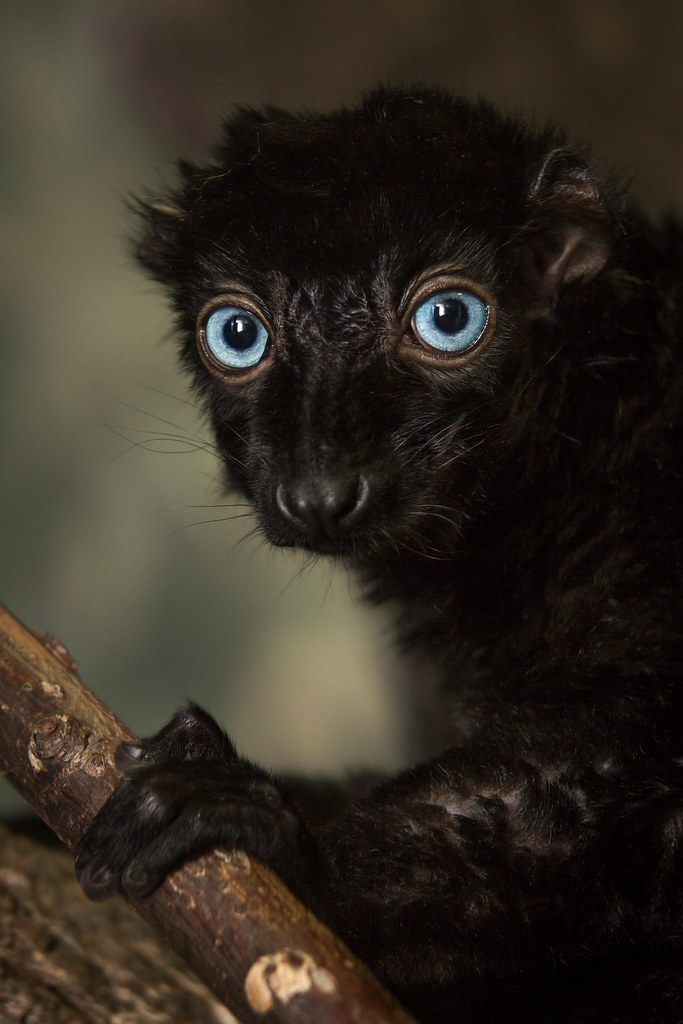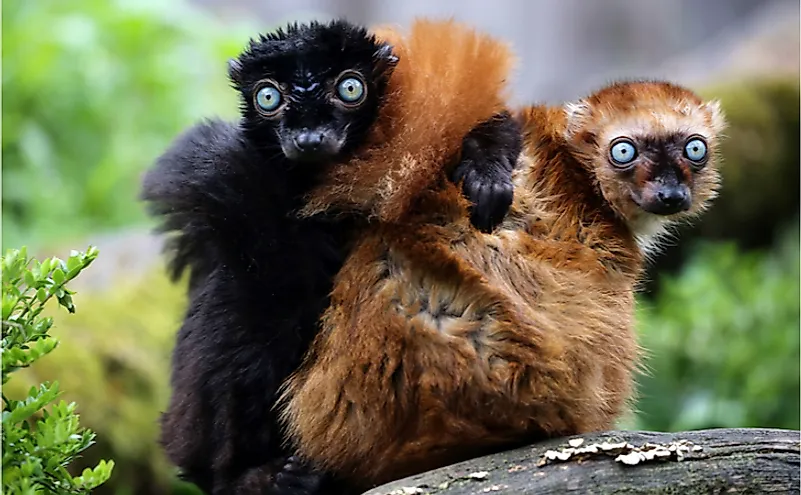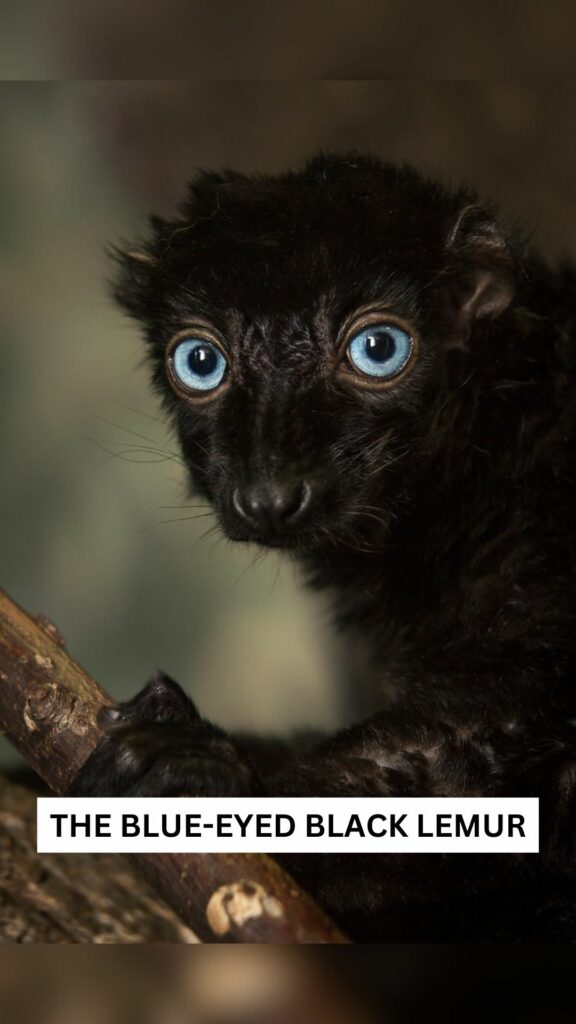
The blue-eyed black lemurs are the only primates besides humans that have blue eyes.
The blue-eyed black lemur (Eulemur flavifrons), also known as Sclater’s lemur, is a species of true lemur. It is native to Madagascar and is among the most threatened primates in the world, with less than ten female blue-eyed black lemurs of breeding age in North America.
The blue-eyed black lemur is sexually dichromatic, meaning that males and females have different colored fur. Males are solid black in color, while females are reddish-brown in color with their underside and outline of their face a lighter tan.
Both sexes have blue eyes, hence the common name, and are one of the only primates other than humans to consistently have blue eyes. The eyes can range in color from a shocking electric blue, a light sky-blue, or a softer gray-blue. Blue eyes are rare in the wild as they offer less sun protection than eyes with darker irises.

Blue-eyed black lemurs have not been studied extensively in the wild, so little is known about their behavior outside of human care. However, they are known to be fairly social and travel in noisy bands of about 7-15 individuals, eating, sleeping, and vocalizing together.
Like many lemur species, they are matriarchal, and females are dominant. The blue-eyed black lemur communicates with scent-marking, vocalizations, and perhaps some facial expressions. Females give birth to one or two offspring in June or July, after a gestation of 120 to 129 days.
The young are weaned after about 5-6 months and reach maturity at about 2 years of age. The blue-eyed black lemur demonstrates a cathemeral activity pattern, being awake sporadically throughout the day. The occasional nighttime activities are thought to be based on the intensity of the moonlight.
Text credit: Earth Unreal
Did you enjoy this article? Pin it for later.
And while you’re on Pinterest, come follow us and pin along with us.






